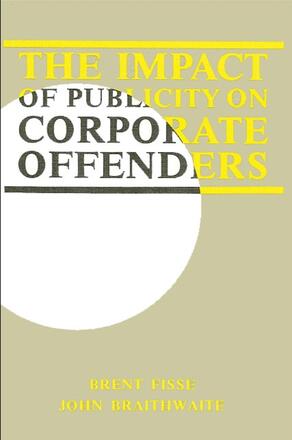
The Impact of Publicity on Corporate Offenders
Alternative formats available from:
Description
Uncertainty surrounds the use of publicity as a means of controlling corporate crime. On the one hand, some agree with Justice Brandeis's dictum that light is "the best of disinfectants...the most efficient policeman." On the other hand, many believe that corporations' internal affairs are effectively shrouded with a thick fog that prevents the light of public scrutiny from reaching them.
The Impact of Publicity on Corporate Offenders is the first study to go beyond the rhetoric, through an examination of corporate experience. Fisse and Braithwaite have carried out a qualitative inquiry concerning 17 large corporations involved in publicity crises. Based mainly on interviews, the inquiry includes company employees and former employees, union officials, officers of government regulatory agencies, competitors, independent accountants, government prosecutors, public interest activists, judicial officers, stockbrokers, and other experts.
Brent Fisse is an internationally known specialist in criminal justice associated with the University of Adelaide Law School, Adelaide, Australia. John Braithwaite is on the faculty of the Australian Institute of Criminology.
Reviews
The result is a vivid, comprehensive picture of the various impacts of adverse publicity in major corporate crises. In light of this information, the authors suggest ways in which publicity can be used more effectively to control corporate crime. The book will also serve as a model for future research on corporate lawbreaking.